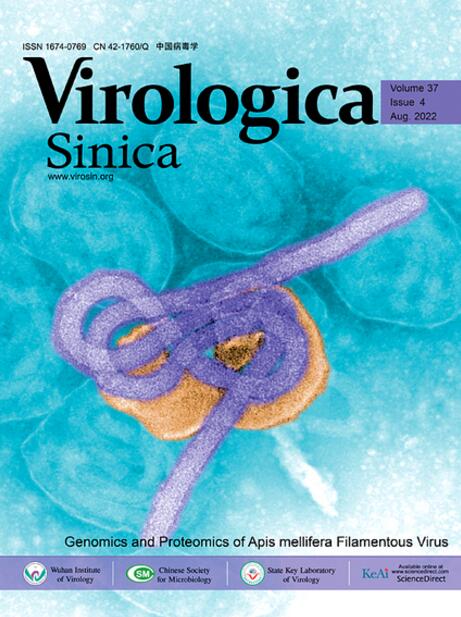Development of a reporter HBoV1 strain for antiviral drug screening and life cycle studies
IF 4
3区 医学
Q1 Medicine
引用次数: 0
Abstract
Human bocavirus 1 (HBoV1; family: Parvoviridae) causes a wide spectrum of respiratory diseases in children and gastroenteritis in adults. A lack of sensitive cell lines and efficient animal models hinders research on HBoV, including the development of anti-HBoV drugs or vaccines. Although the construction of a wild-type HBoV1 infectious clone has been reported, generating HBoV1 infectious clone carrying foreign reporter genes with suitable insertion sites in its genome while retaining replicative ability remains challenging. Here, HBoV1 infectious clones harboring the 11-amino-acid HiBiT tag at five distinct insertion sites were constructed and evaluated. Only the recombinant HBoV1 carrying the HiBiT tag in the N-terminus of the NS1 protein (HBoV1-HiBiTNS1) displayed comparable characteristics to wild-type HBoV1 as determined via the analysis of viral DNA copy number, NanoLuc activity, viral protein expression, and the formation of replication intermediates. Notably, the replication kinetics of HBoV1-HiBiTNS1 could be examined by monitoring NanoLuc activity, which was noted to be correlated with the viral DNA level. Additionally, we successfully applied HiBiT-tagged HBoV1 for the evaluation of antiviral drug activity and identified ivermectin (EC50 = 2.27 μM) as a potent anti-HBoV1 replication drug. Overall, our study demonstrated that the HBoV1-HiBiTNS1 reporter can serve as a convenient platform for screening candidate drugs targeting HBoV1 replication and may also be useful for investigating the life cycle of the virus.
用于抗病毒药物筛选和生命周期研究的报告毒株HBoV1的研制。
人bocavavirus 1 (HBoV1);细小病毒科)引起广泛的儿童呼吸道疾病和成人肠胃炎。缺乏敏感的细胞系和有效的动物模型阻碍了对HBoV的研究,包括抗HBoV药物或疫苗的开发。虽然已经有构建野生型HBoV1感染克隆的报道,但要使HBoV1感染克隆在基因组中携带外源报告基因并有合适的插入位点的同时保持复制能力仍然是一个挑战。本研究构建并评估了在5个不同插入位点携带11-氨基酸HiBiT标签的HBoV1感染性克隆。只有在NS1蛋白n端携带HiBiT标签的重组HBoV1 (HBoV1- hibitns1)通过分析病毒DNA拷贝数、NanoLuc活性、病毒蛋白表达和复制中间体的形成,显示出与野生型HBoV1相似的特征。值得注意的是,HBoV1-HiBiTNS1的复制动力学可以通过监测与病毒DNA水平相关的NanoLuc活性来检测。此外,我们成功地应用hibit标记的HBoV1进行抗病毒药物活性评估,并鉴定出伊维菌素(EC50 = 2.27 μM)是一种有效的抗HBoV1复制药物。总之,我们的研究表明HBoV1- hibitns1报告基因可以作为筛选靶向HBoV1复制的候选药物的便利平台,也可能对研究病毒的生命周期有用。
本文章由计算机程序翻译,如有差异,请以英文原文为准。
求助全文
约1分钟内获得全文
求助全文
来源期刊

Virologica Sinica
Biochemistry, Genetics and Molecular Biology-Molecular Medicine
CiteScore
7.70
自引率
1.80%
发文量
3149
期刊介绍:
Virologica Sinica is an international journal which aims at presenting the cutting-edge research on viruses all over the world. The journal publishes peer-reviewed original research articles, reviews, and letters to the editor, to encompass the latest developments in all branches of virology, including research on animal, plant and microbe viruses. The journal welcomes articles on virus discovery and characterization, viral epidemiology, viral pathogenesis, virus-host interaction, vaccine development, antiviral agents and therapies, and virus related bio-techniques. Virologica Sinica, the official journal of Chinese Society for Microbiology, will serve as a platform for the communication and exchange of academic information and ideas in an international context.
Electronic ISSN: 1995-820X; Print ISSN: 1674-0769
 求助内容:
求助内容: 应助结果提醒方式:
应助结果提醒方式:


